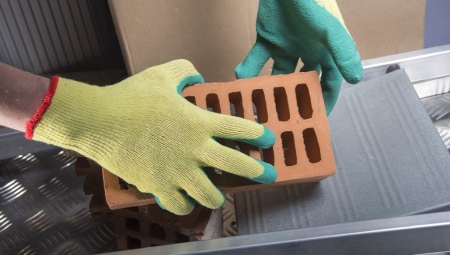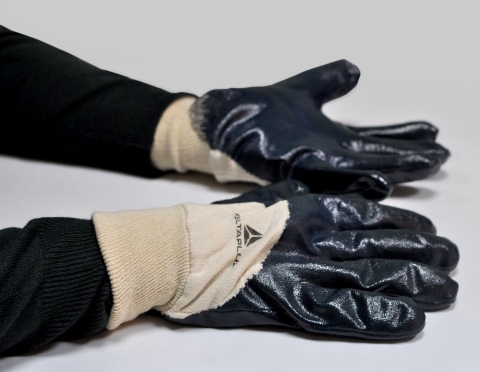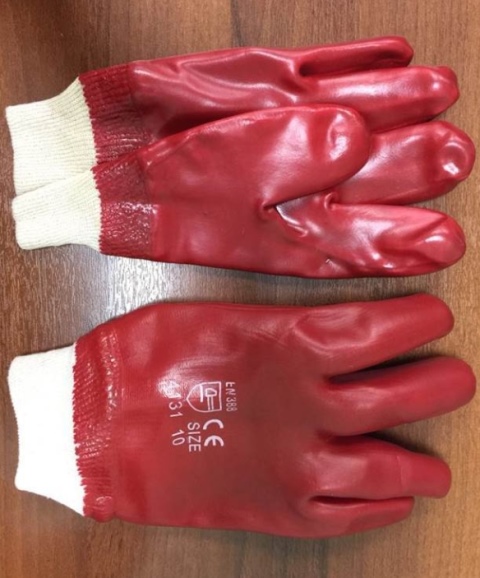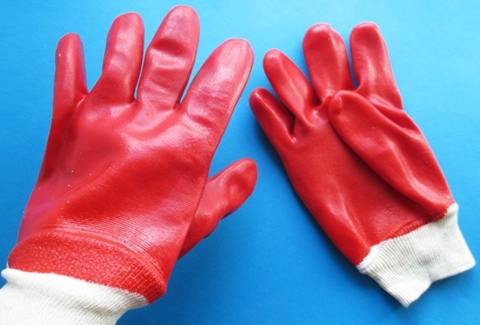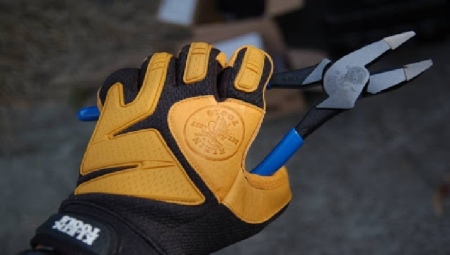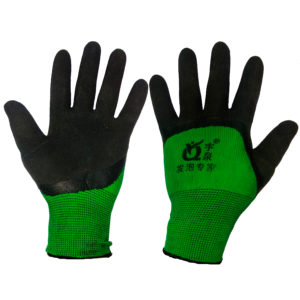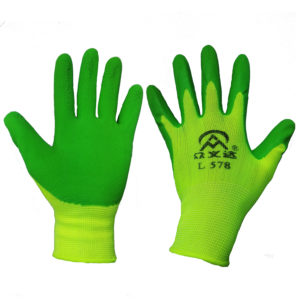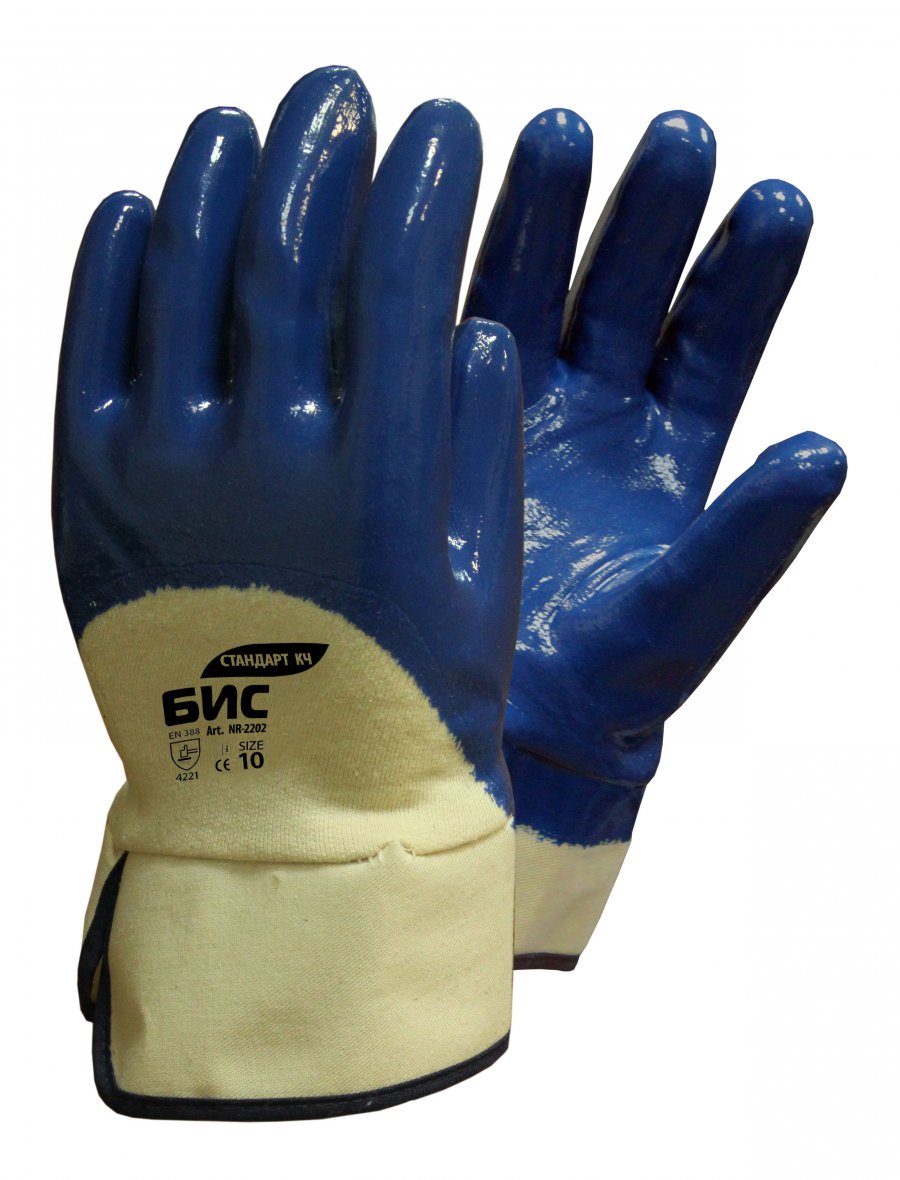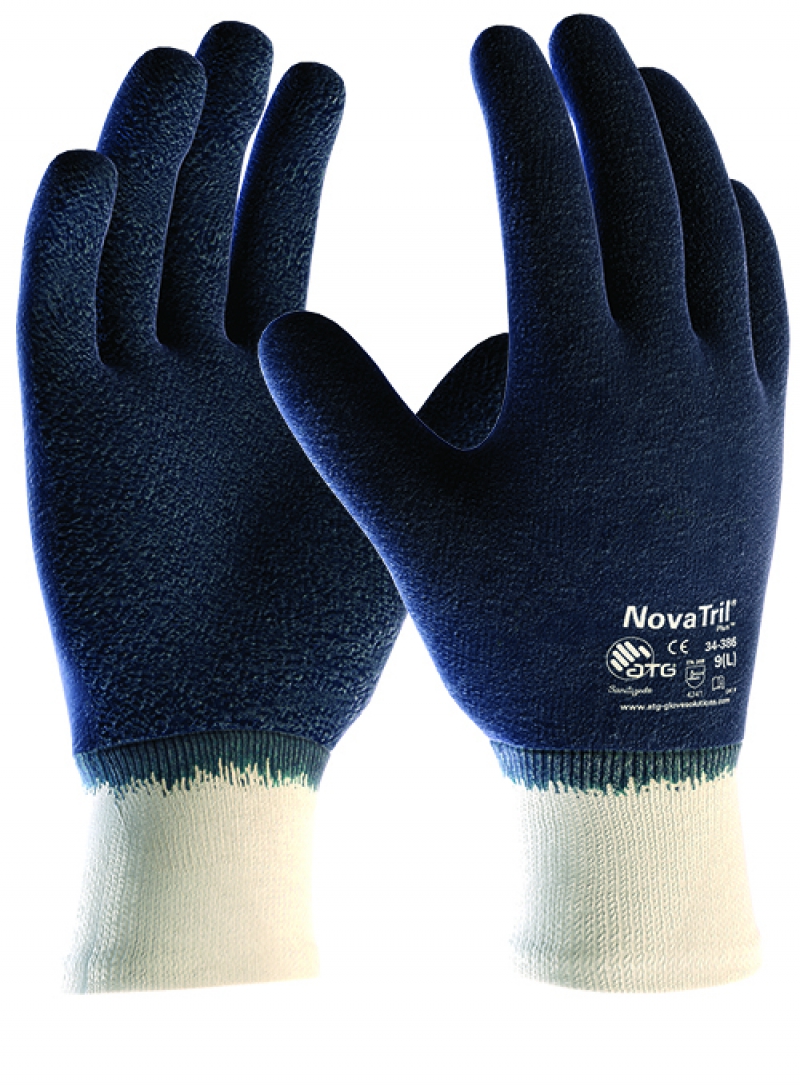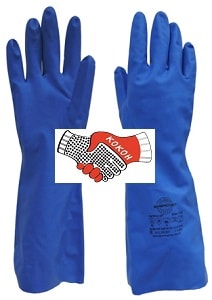How to choose?
The type of material from which they are made and its thickness have the greatest influence on the level of chemical protection of gloves. The thicker the material of the gloves, the higher their chemical resistance. However, this reduces finger sensitivity and grip. The size and fit of the gloves must also be considered as a prerequisite for comfort, productivity and safety at work. Gloves should be sized to fit the natural contour of the hands.

Hands get tired from working in tight gloves, and too large gloves are uncomfortable, difficult and even dangerous to work in them. When choosing suitable gloves, the following sequence of steps is recommended.
-
Determination of substances from which hands must be protected.
-
Selection of the material that best meets the protective criteria.
-
Choice of length of gloves. The length depends on the intended immersion depth and takes into account possible splash exposure.
-
For small precision work requiring high sensitivity, thin gloves are needed. If increased protection or durability is required, thick gloves should be chosen.
-
The size should provide maximum convenience and comfort when working.


Main characteristics
Today, rubber technical gloves are made mainly of 3 types of material - latex, vinyl and nitrile. On the farm, they are a useful accessory when working with water, mud and chemicals. The scope of application of gloves is wide - they are used both in simple household chores and during repair and painting work.
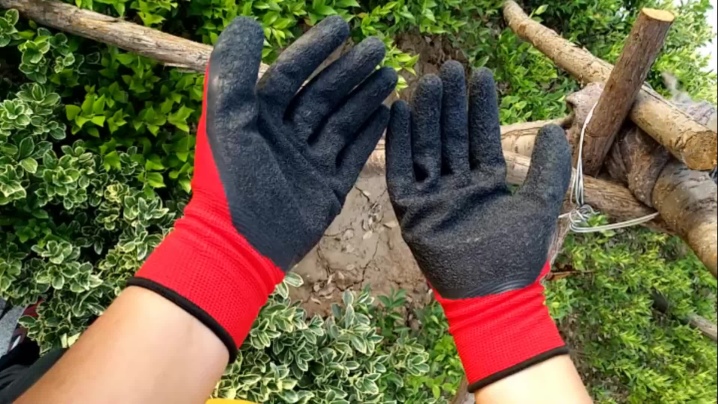
According to the service life, technical gloves are divided into 2 types:
- disposable - after work to be disposed of;
- reusable - serve for several months, depending on the frequency of use.

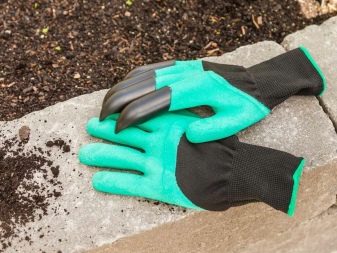
Protective gloves are also divided into 2 conditional groups:
- universal - used in works where hand protection from mechanical damage is needed;
- special - designed for certain jobs, have an increased level of protection, differ in material and the principle of sewing.
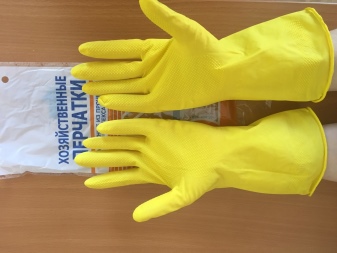
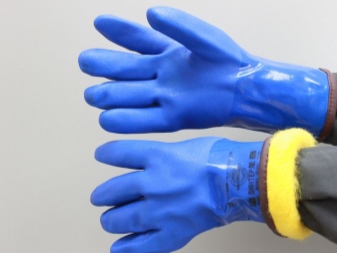
There are special types of protective products such as anti-slip and fingerless. Various types are used in certain areas, however, the general requirements for all products are the same, first of all, this is protection.
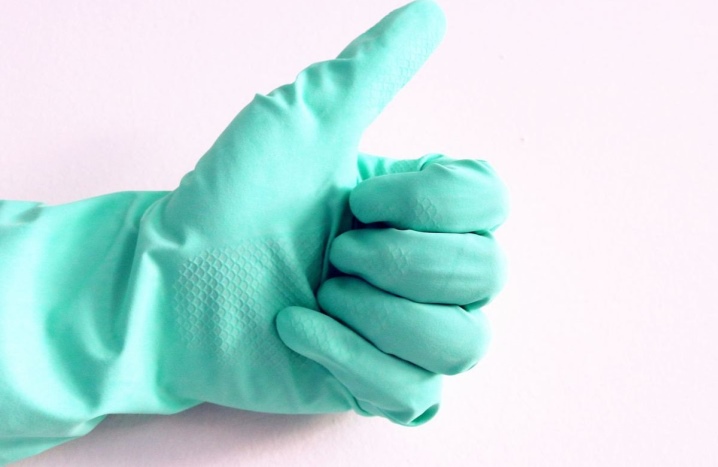
Application: spheres and industries
Gloves with a protective coating are suitable for any area that involves prolonged exposure to saturated hydrocarbons and rough physical work: the abrasion-resistant coating and soft base will protect against abrasions, scratches and calluses.
MBS is often used in the oil industry
Automotive industry
MBS is often used in car services for assembly and repair work.
- PPE will help to avoid contamination caused by the specifics of work in the automotive sector.
- The coating insulates the skin from fuels and lubricants and electrolyte, which can cause irritation and, less often, chemical burns.
Mining industry
- Heavy physical work is performed on mine workings, which is fraught with damage.
- Oil-resistant PPE is used by specialists who interact with aggressive reagents: such substances are used for mineral processing.
Construction of buildings and structures
In the construction of facilities, chemicals are used to achieve many goals. Most often, builders use paintwork materials and various solvents, which have a detrimental effect on the body.
Oil and petrol resistant gloves are in demand in the construction of construction projects
- Protection against paints and varnishes. In many people, finishing materials cause allergic reactions when exposed through the respiratory tract, when they enter the digestive tract and on the skin. In addition, the paint is difficult to clean without the help of solvents, which also do not bring health benefits.
- Prevention of mechanical damage - punctures, cuts, etc. The dense rubber coating allows you to engage in physical labor, avoiding skin micro-injuries.
Oil production, gas and chemical industries
Specialists in these areas are at the highest risk of injury due to chemicals, so oil and petrol resistant gloves are a must-have workwear kit in this industry.
- For workers in these areas, protection from the effects of oil, oil and water is mandatory: when oil products come into contact with the skin, pustular foci of inflammation (the so-called oil and kerosene acne), eczema, dermatitis and other serious diseases of the dermis up to necrosis may develop;
- It also requires constant protection from condensation gas, which causes dryness and cracks in the skin.
We examined the features of oil and petrol resistant personal protective equipment: this is the best way to protect the skin from chemical burns and minor mechanical injuries. We remind you that according to the Labor Code of the Russian Federation, each employer is obliged to provide employees with a full set of PPE in accordance with safety requirements. In order for PPE to reliably protect your skin from burns and damage, order them only from trusted manufacturers that comply with the requirements of established standards.
"Glove Factory" sells wholesale personal protective equipment: we deliver oil-resistant nitrile gloves to the Ural Federal District and Kazakhstan.
Read more reviews on the website.
Types and features of oil and petrol resistant personal protective equipment
- The general characteristics do not differ for different models: the gloves have two layers.
- The artificial rubber cover (in rare cases - made of PVC) protects against external mechanical and chemical influences;
- The basis is cotton without fleece. The absorbent fabric absorbs sweat, so your hands are comfortable and comfortable to work with.
For different purposes, models are produced with different shades.
Incomplete pouring
Hands breathe better with these gloves than with fully polymer coated gloves. The protective layer is applied to the palm and fingers, but does not cover the back. The model is suitable for those who work with small parts or objects covered with active substances.
Full douche
Option for those who come into contact with large objects in an aggressive environment. A layer of nitrile is applied to the entire product. Depending on the purpose, they choose oil-resistant PPE, different in length and type.
There are short models with knitted cuffs. It is convenient to work in them, tk. they do not slip due to the tight fit of the elastic to the wrist, the shape is close to the anatomical and does not hinder movement. These models include MBS "Granat" gloves.
They also produce MBS with long cuffs. They are suitable if the work exposes the employee to the risk of sudden contact with an aggressive environment, as well as for those who have to immerse their hands in chemically active liquids.
What are comfortable gloves
To work in rubber hand protection was comfortable, it is necessary to select products strictly in size. This will prevent them from slipping or, conversely, pinching the hand. Also, for easy putting on, you can purchase powdered gloves from us.
Inside, they are processed with natural starch, and therefore those who are not allergic to vegetable protein can safely use them. Well, for those who are sensitive to such an allergen, we produce powder-free products.
In addition, sterile protective equipment has to be used in laboratories or healthcare facilities. You can buy disposable gloves of 6-10 degrees of sterility from us. As you can see, our products will reliably protect your hands in any aggressive environment and when working with various reagents.
Therefore, call even now, so that tomorrow you will not be left without affordable and high-quality hand protection!
How to choose work gloves?
Consider what to look for when purchasing gloves with protection:
- Protective functions... Gloves should be comfortable if the protection creates discomfort, normal operation is out of the question.
- Material... It is selected depending on what operations are planned to be performed.
- Air aspect... Regardless of the type of work, the air must move freely. Hands cannot sweat or get cold.
Work gloves size
The wrong gloves for the job can be uncomfortable. The size is determined by the girth and length of the palm of the leading hand. If the shape is non-standard, it is recommended to focus on volume, so there is a high probability that the product will fit. The following standard sizes of work gloves are known:
| Glove size | Palm girth, mm | Brush length, mm |
| 6 (S) | 152 | 160 |
| 7 (M) | 178 | 171 |
| 8 (L) | 203 | 182 |
| 9 (XL) | 229 | 192 |
| 10 (XXL) | 254 | 204 |
| 11 (XXL) | 279 | 215 |
How to choose?
Gloves, like other products, have quality standards. Product information is displayed on the label with special symbols in the form of numbers and letters. There is a marking for Russian products:
- MI - resistant to abrasion;
- MP - dense products, resistant to cuts;
- MA - protect against vibrations.
Imported products have their own markings indicating the protection class:
- A - resistant to abrasion;
- B - dense products, resistant to cuts;
- C - resistant to tearing;
- D - dense products, puncture resistant.
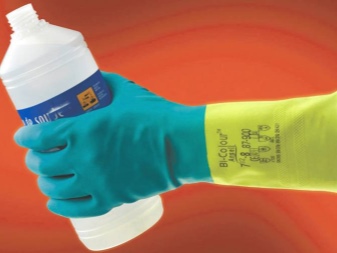
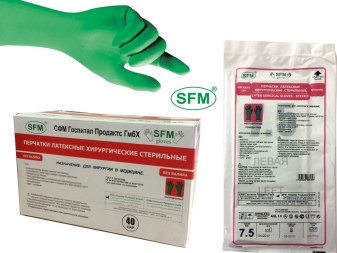
The size range of gloves has classic designations:
- S is the smallest size, suitable for a small female hand;
- M - suitable for medium sized hands and arms;
- L / XL - wide gloves, mainly used by men.
These are the basic characteristics that are sufficient for the selection of the right technical gloves.
About what kind of rubber technical gloves to use, see below.
Protecting your hands together
Therefore, it is very important not only to protect your hands, but to choose the right type of gloves for this. Our company produces all types of hand protection provided by GOST
For the production of high-quality products, 100% control of the entire assortment is carried out. Any products made by VIRGATA have a certificate of conformity provided for in the countries of the Customs Union.
To protect the hands from the harmful effects of chemicals, the following types of gloves are used:

Latex gloves
For their production, a natural substance is used - the sap of the Brazilian hevea tree, which contains natural latex. Products made from it perfectly fit the hand and are elastic. However, these latex gloves are not suitable for everyone - the natural protein contained in the latex film can cause allergies or irritation in people with sensitive skin.
Vinyl gloves
These gloves are made from synthetic polyvinyl chloride, which is composed of petroleum and table salt. Special substances-plasticizers are added to the composition, which increase the plasticity of the material.
Paradoxically, they are less allergenic than natural ones. These protectors are not too tight to the brush and are less elastic than latex, but they are suitable for almost everyone. They, like any other rubber gloves (namely, this group includes all hand protection against chemical exposure), do an excellent job with the following tasks:
- do not allow contact with the skin of aggressive compounds and substances (since they are sealed);
- sit comfortably on the hand;
- prevent objects from slipping.
Vinyl gloves have no foreign smell, are more resistant to various types of chemicals than latex ones, and are almost equal in cost to the latter.
Nitrile gloves
These remedies are among the most anti-allergenic and durable
They are more difficult to break through or puncture, which is extremely important when working with aggressive materials. Nitrile gloves are abrasion resistant and withstand a wide variety of species:
- alcohols;
- acids;
- solvents;
- hydrocarbons;
- alkalis.
Nitrile film is produced by polymerizing a synthetic petroleum-based latex. This gives a very strong material (denser and more difficult to tear than latex or vinyl). Accordingly, the cost of these means of protection is higher than that of the other two, but they are still more reliable.
MBS gloves: general information
Until now, some people have questions about the right choice of a protective product that is resistant to oil and petroleum products. This happens because product labeling does not always correspond to the recommendations for use. Gloves coated with nitrile, latex, neoprene and PVC can be found under the name MBS, although in reality from this list, PPE with a nitrile coating can be used as oil and petrol resistant ones.
Reason for discrepancies
The European quality standard classifies all these materials as MBS. At the same time, only nitrile PPE corresponds to the VI class of resistance: they withstand the maximum load stipulated by the standard - 8 hours in heptane, therefore, they are optimal for daily use.
Why you can't use gloves made of other materials
The resistance class of PVC, depending on the number of coating layers, varies between II and III, because the material is destroyed within 2-3 hours of testing.
The neoprene coating is somewhat more resistant than PVC, and yet PPE with such a coating is not recommended for permanent contact with saturated hydrocarbons, because classified not higher than IV stage.
Latex gloves should be mentioned separately: due to the incorrect interpretation of the EN standard, they are mistakenly classified as oil and petrol resistant. In fact, according to European regulations, all materials that have withstood more than 30 minutes in heptane are labeled J - "resistant to saturated hydrocarbons." Of course, half an hour is too little time to work in conditions of interaction with aggressive chemistry.
The only material that is suitable for constant manipulation of active substances is nitrile: other species do not hold chemicals, so specialists risk injury by using weak PPE.
MBS in production
Protective properties
- Protect against mechanical damage - punctures and cuts: suitable for heavy work.
- Abrasion resistance extends service life: By purchasing nitrile MBS, you optimize your PPE costs.
- Stable in contact with saturated carbons: the polymer surface withstands long-term interaction with them.
Peculiarities
- Flexible and pliable synthetic rubber cover does not hinder movement;
- Good adhesion: it is equally comfortable to handle items with dry, damp and oiled gloves.
- You should not use nitrile PPE at sub-zero temperatures: the material loses its elasticity, and it becomes difficult to work.

